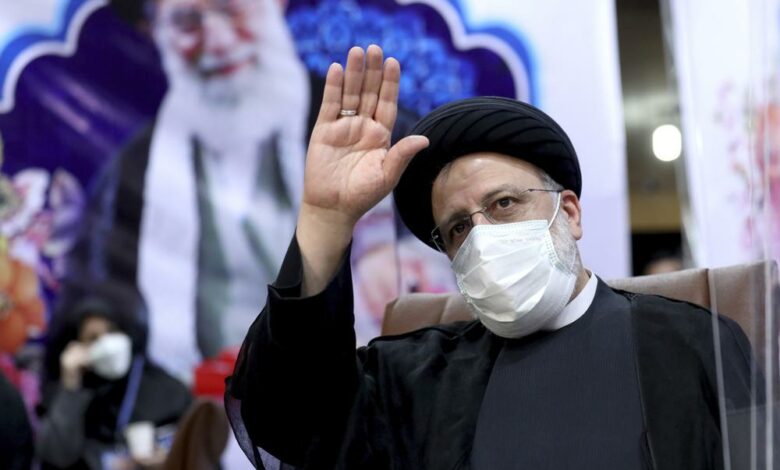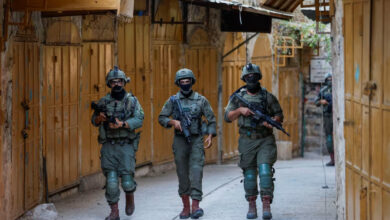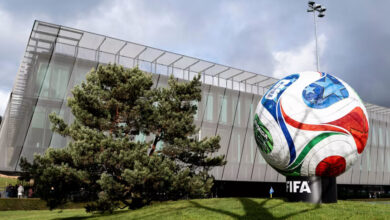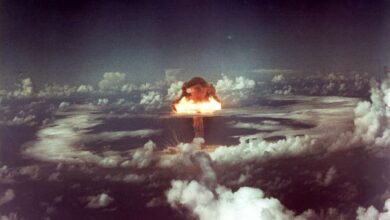
DUBAI, United Arab Emirates (AP) — Once a protégé of Iran’s supreme leader is sworn in as president this week, hard-liners will control all parts of the Islamic Republic’s civilian government.
Given the brinkmanship over its accelerating nuclear program and the West alleging that Tehran launched a fatal drone attack targeting an oil tanker linked to an Israeli billionaire last week, one might think that had already happened.
Iran’s inauguration of President-elect Ebrahim Raisi on Thursday represents the last stop in a slow slide from the hopes that the 2015 nuclear deal would open the Islamic Republic to the West.
Instead, the country that Raisi takes over is now enriching small quantities of uranium closer than ever to weapons-grade levels, interferes with international inspections of its nuclear sites and allegedly plotted to kidnap an exiled critic from the streets of Brooklyn. And Iran’s own version of a “maximum pressure” campaign may grow more intense in the short term.
Relations between Iran and the US always remain anchored to the weight of their bitter recent history. For America, it began with the 1979 US Embassy takeover and subsequent hostage crisis that transfixed a nation and doomed the presidency of Jimmy Carter. In Iran, the original sin remains the 1953 CIA-backed coup that toppled the country’s prime minister and cemented the rule of Shah Mohammad Reza Pahlavi — lighting the long fuse for the Islamic Revolution.
There have been, however, brief moments when that tether eased. Then-President George H.W. Bush’s outreach to Tehran — with his famous phrase “goodwill begets goodwill” in his 1989 inauguration — largely went unanswered. Iran’s reformist President Mohammad Khatami tried to open a door to the US, only to find it quickly shut after the Sept. 11, 2001, attacks and as Bush’s son put Tehran in his “Axis of Evil.”
The nuclear deal sought to end another escalatory cycle between Iran and the United States.
Under the accord, Tehran agreed to drastically limit its nuclear program in exchange for the lifting of economic sanctions crushing its long-ailing economy. That cut off Iran from having enough nuclear material to make an atomic weapon if to chose to pursue one. Experts from the International Atomic Energy Agency would verify Tehran’s compliance under its most-stringent inspection protocols.
The deal came under the administration of now-outgoing President Hassan Rouhani, a relatively moderate cleric within the theocracy. It showed that Iran’s civilian government, though operating on a narrow bandwidth under Supreme Leader Ayatollah Ali Khamenei, can affect how the rest of the world interacts with Iran.
“The deal can and should herald a new era and lead to positive outcomes regarding the establishment of sustainable peace and stability in the region,” Rouhani proudly told the UN General Assembly in 2015. “From our point of view, the agreed-upon deal is not the final objective but a development which can and should be the basis of further achievements to come.”
That wasn’t to be the case. President Donald Trump in May 2018 unilaterally withdrew from the deal, citing the fact it dealt only with the nuclear program and not Iran’s ballistic missile program nor its support of regional militias.
And by last week, Khamenei lectured Rouhani’s outgoing administration on the deal’s failings, saying: “In this government, it was shown that trust in the West does not work.”
Iran began dialing up pressure in the region since the summer of 2019, when ships came under mysterious attacks that the US Navy blamed on mines planted by Tehran. Iran also shot down an American drone and responded to the US drone strike that killed a top Iranian general in Baghdad by launching a ballistic missile strike targeting US troops in Iraq.
After a lull amid the coronavirus pandemic, Iran now appears to be going up-tempo yet again to challenge President Joe Biden, who has said he’s willing to re-enter the atomic accord. Talks in Vienna, however, broke down in the waning days of the Rouhani administration.
“We could have implemented the (deal) and lifted the sanctions, but we were stopped somewhere else,” the outgoing Iranian president cryptically said Sunday.
During his campaign, Raisi said he wanted to re-enter the deal with his incoming “strong” government where the presidency, the judiciary and the parliament all are held by hard-liners like himself. What that would look like remains unclear, but Iranian hard-line newspapers such as Vatanemrooz printed a black-and-white funeral-style image of Rouhani on Monday, offering this take on his presidency: “We neither forgive nor forget.”
The push for a confrontational approach to the West is not likely to make Raisi blink. As a prosecutor early in his career, Raisi served on a so-called “death” panel deciding who would live or be executed in a purge that activists say saw as many as 5,000 people killed in 1988. He has loyally followed Khamenei and was rewarded at one point with the task of running a religious foundation in Iran with assets believed to be in the tens of billions of dollars. The Astan Quds Razavi Foundation owns almost half the land in Mashhad, Iran’s second-largest city.
The country’s other branches of government already have signaled they will follow along if Raisi, once in office, decides to up the ante.
Iran’s judiciary, which Raisi led in recent years, remains internationally criticized for its closed-door trials and executions. The parliament demands Iran’s nuclear program move closer to weapons-grade levels while pursuing further censorship of the internet.
Whatever path he pursues on foreign policy, there is a danger lurking at home for Raisi. With all the levers of government at his fingertips, he will inherit the myriad of problems facing Iran that have sparked nationwide protests over recent years.
His response to that may prove just as important to how he handles the West.
___




